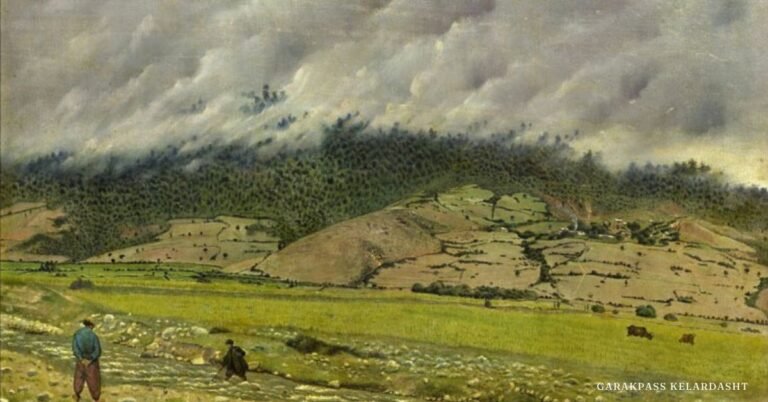Garakpass Kelardasht is an emerging destination that has captured the attention of nature enthusiasts, adventure seekers, and travelers alike. Nestled in the heart of northern Iran, this scenic area offers breathtaking views, rich cultural heritage, and a unique blend of activities that make it a must-visit spot. In this article, we will dive into the significance of Garakpass Kelardasht, its geographical features, history, tourism potential, and practical tips for anyone planning a visit. Whether you’re planning a solo adventure or a family getaway, this guide will provide you with all the information you need to make the most of your trip to Garakpass Kelardasht.
What is Garakpass Kelardasht?
Garakpass Kelardasht is a picturesque region located in the mountainous areas of Mazandaran province in northern Iran. The area is known for its lush forests, clear rivers, and a unique landscape that attracts visitors throughout the year. The name “Garakpass” refers to a mountain pass, which sits at the crossroads of several major hiking routes. Kelardasht, the larger region, is renowned for its verdant valleys and stunning vistas, making it a prime destination for eco-tourism, hiking, and nature exploration.
Geographical Features of Garakpass Kelardasht
The geographical location of Garakpass Kelardasht places it in the Alborz mountain range, known for its dramatic slopes, towering peaks, and rich biodiversity. This region is a perfect blend of alpine terrains and subtropical environments, giving it a distinct climate and rich natural resources. Visitors can expect to encounter dense forests, expansive meadows, and crystal-clear streams, all contributing to the area’s charm.
Garakpass is famous for its scenic routes, including high-altitude trails, providing breathtaking panoramic views of the surrounding valleys and peaks. The area is also known for its diverse wildlife, including a variety of bird species, reptiles, and mammals, adding to the allure of the region.
The History of Garakpass Kelardasht
Garakpass Kelardasht has a long history, intertwined with both local and regional traditions. The area has been an important site for trade, culture, and heritage for centuries. Historically, it has served as a passage for travelers making their way through northern Iran, especially those journeying from the coastal regions toward the central plains.
The region is rich in historical sites, many of which reflect the ancient civilizations that once thrived here. Archaeological evidence suggests that Garakpass Kelardasht was an important center of agricultural activity, with ancient cultivation methods still influencing local farming practices today. The blend of historical richness and natural beauty makes it an ideal spot for cultural tourism.
Tourism and Activities in Garakpass Kelardasht
One of the key attractions of Garakpass Kelardasht is its tourism potential. The area is well-suited for a variety of outdoor activities that cater to different types of travelers. Whether you’re interested in hiking, camping, or simply soaking in the stunning views, Garakpass Kelardasht has something to offer.
Hiking and Trekking Trails
The region is home to some of the most popular hiking trails in northern Iran. Hiking enthusiasts flock to Garakpass Kelardasht to experience its diverse terrain. From relatively easy walks through lush forests to more challenging climbs up the steep mountain passes, there’s a trail for every skill level. The Garakpass route itself is a favorite among trekkers, offering an immersive experience of the area’s natural beauty.
Some popular trekking destinations include:
- Mount Alamkuh: The second-highest peak in Iran, offering advanced hiking opportunities.
- Garakpass Hiking Route: Ideal for those looking for scenic views without the extreme difficulty.
- Siach Valley: A remote valley perfect for multi-day treks.
Eco-Tourism and Nature Exploration
Eco-tourism is another major attraction in Garakpass Kelardasht. The region is home to diverse ecosystems, ranging from subtropical rainforests to alpine meadows. The unique flora and fauna provide an excellent opportunity for nature enthusiasts to explore and document their findings. Bird watchers, photographers, and wildlife lovers will find themselves captivated by the area’s biodiversity.
Visitors can take part in guided eco-tours to learn more about the environment, conservation efforts, and local wildlife. Some of the protected species in the region include brown bears, wild boar, and various bird species, which make Garakpass an exceptional location for nature-based tourism.
Cultural Heritage and Local Traditions
In addition to cultural experiences, visitors can purchase handmade crafts, such as woven textiles, pottery, and wood carvings, directly from local artisans. These crafts serve as excellent souvenirs and are often created using techniques passed down through generations.
Practical Tips for Visiting Garakpass Kelardasht
Planning a trip to Garakpass Kelardasht requires some preparation, especially if you’re venturing into the mountains for hiking or trekking. Below are some practical tips to help you have a safe and enjoyable experience.
When to Visit Garakpass Kelardasht
The best time to visit Garakpass Kelardasht is during the spring and summer months, from May to September, when the weather is mild, and the trails are accessible. However, for those interested in snow sports, winter months (November to February) offer an entirely different experience, with snow-capped peaks and skiing opportunities. Be prepared for variable weather conditions, as temperatures can fluctuate significantly in the mountains.
What to Bring
- Appropriate Footwear: Sturdy hiking boots are essential for trekking on rocky and uneven terrain.
- Layered Clothing: The temperature can change quickly in the mountains, so dressing in layers is advisable.
- Navigation Tools: A map, compass, or GPS device can help you navigate the trails, especially if you’re venturing off the main routes.
- Camping Gear: For multi-day treks, be sure to bring tents, sleeping bags, and cooking equipment.
- Water and Snacks: While there are rivers and streams, carrying sufficient water and snacks is important, especially on long hikes.
Where to Stay
Accommodation in Garakpass Kelardasht is diverse, ranging from basic guesthouses to more luxurious eco-lodges. Visitors can choose from local inns in the nearby villages or opt for camping in the mountains. For those looking for more comfort, several guesthouses offer modern amenities, including internet access and meals.
Garakpass Kelardasht: A Hidden Gem in Northern Iran
Garakpass Kelardasht is undoubtedly one of the hidden gems of northern Iran. With its stunning natural beauty, rich cultural heritage, and a wide array of activities, it is a destination that appeals to a wide range of travelers. Whether you’re looking for an adventurous trekking experience, a peaceful retreat into nature, or an immersion in local culture, Garakpass Kelardasht offers it all.
Comparison Chart: Garakpass Kelardasht vs. Other Northern Iranian Destinations
| Feature | Garakpass Kelardasht | Ramsar | Tonekabon |
|---|---|---|---|
| Location | Mazandaran Province | Mazandaran Province | Mazandaran Province |
| Primary Attractions | Hiking, Eco-Tourism, Culture | Beaches, Thermal Springs | Forests, Hiking Trails |
| Best Time to Visit | May – September | Summer months | Year-round |
| Accommodations | Guesthouses, Camping | Resorts, Hotels | Guesthouses, Camping |
| Wildlife | Diverse fauna, alpine species | Coastal species | Forest wildlife |
Conclusion
Garakpass Kelardasht is a versatile and captivating destination that offers something for everyone. Whether you’re an adventure seeker, a nature lover, or someone looking to immerse yourself in the local culture, this region of northern Iran has it all. From its breathtaking landscapes to its rich history and warm hospitality, it stands out as one of the most enchanting locations in the country. By following this guide, you can make the most of your visit and discover the many treasures this unique destination has to offer.

